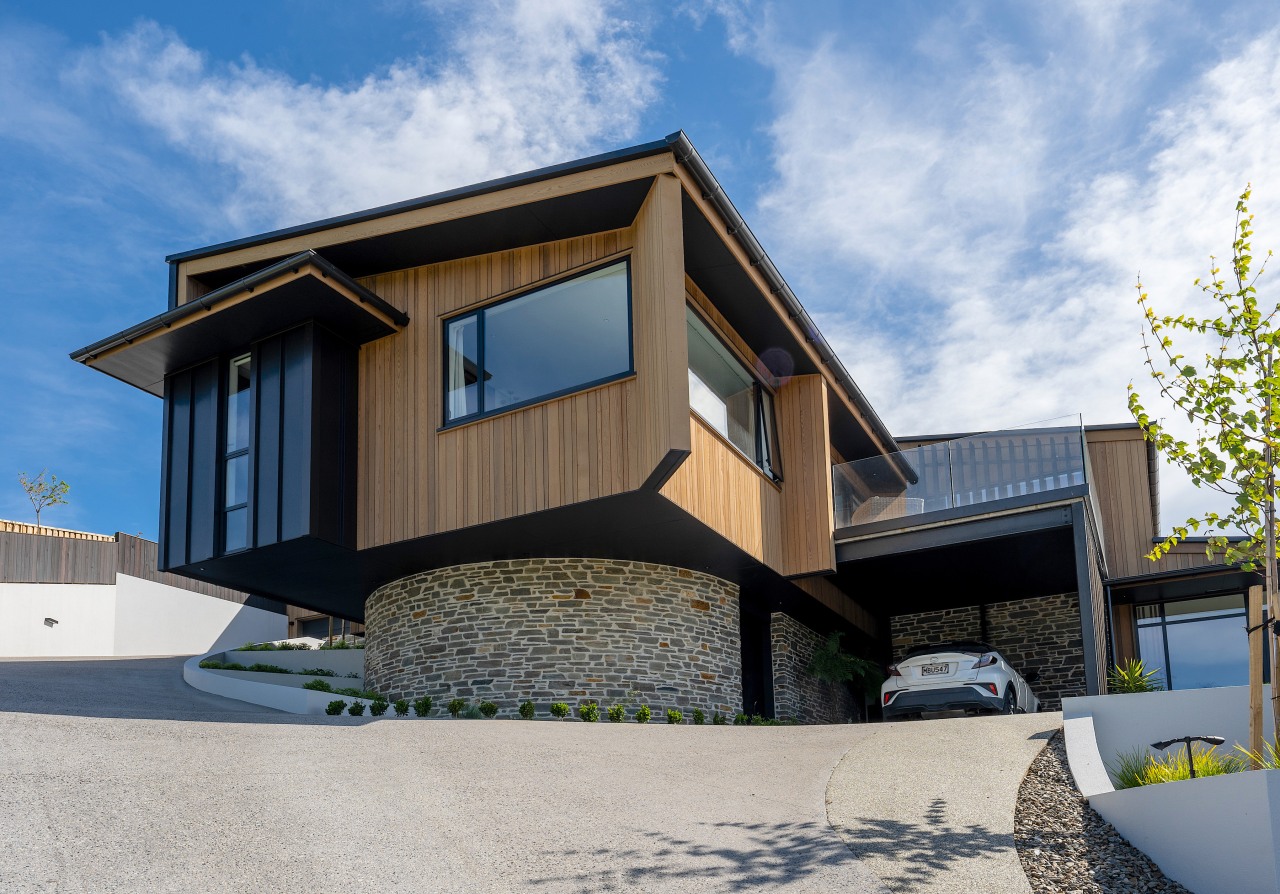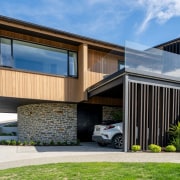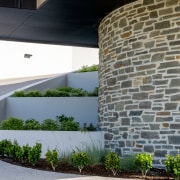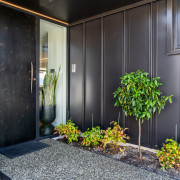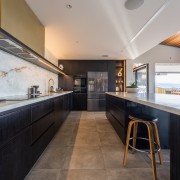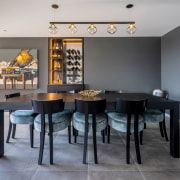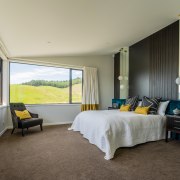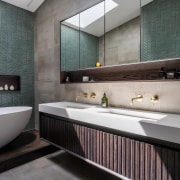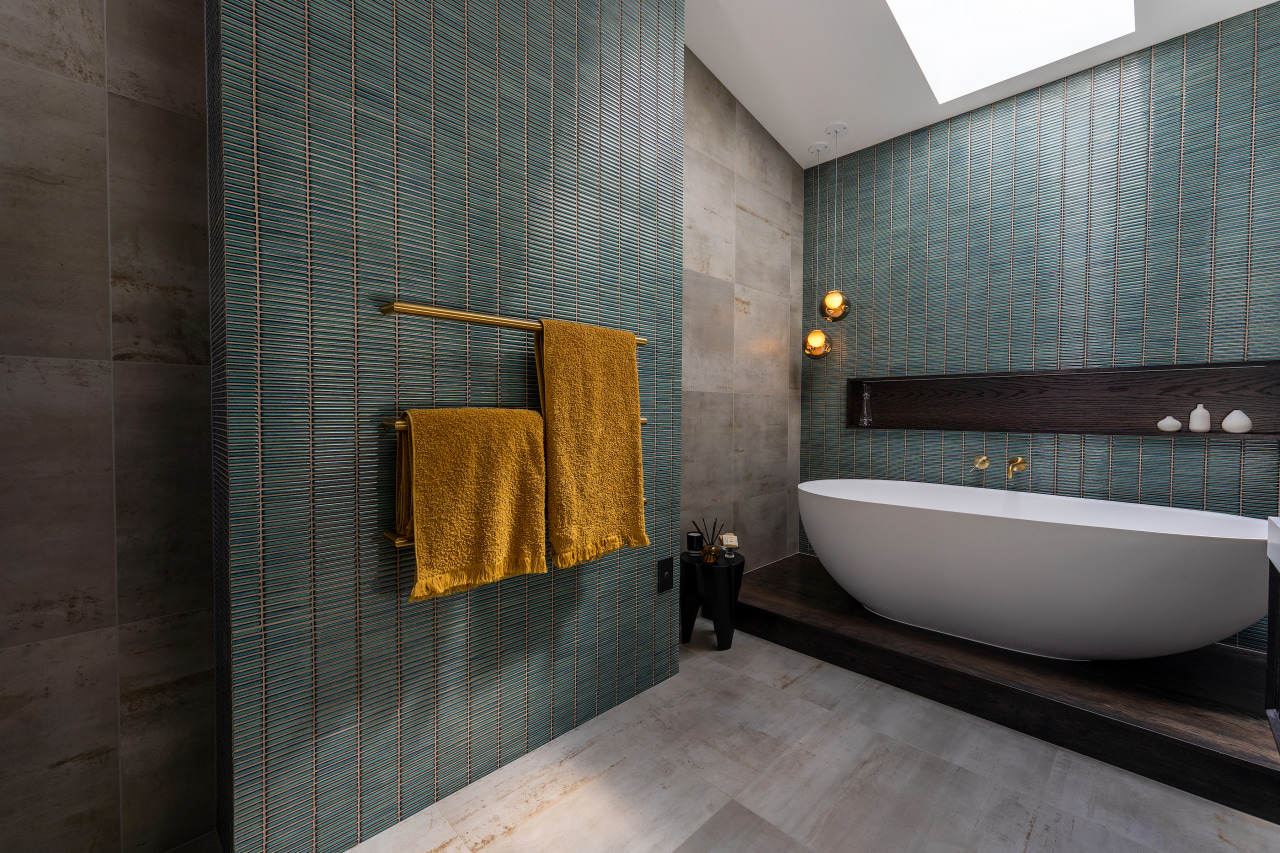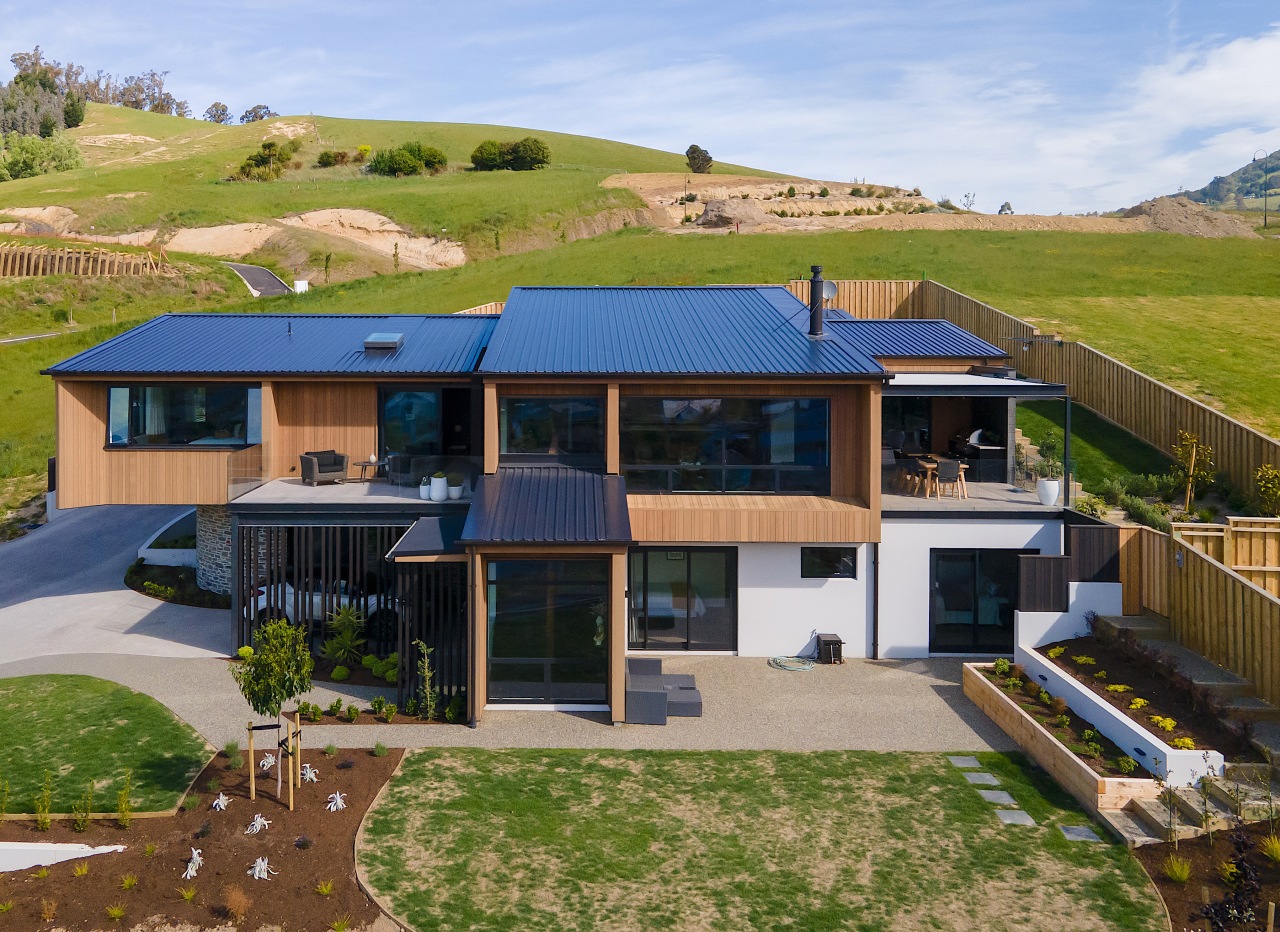Steep and sustainable
Mitigating the impact of a steep site played a part in the choice of both form and finishes for this highly sustainable, building-efficient home
Designed by Cameron Grindlay, Dwelling Architectural Design
From the building designer:
The brief
The owners requested a two-storey residence – which was dictated by the steepness of the site.
The main living was to be on a single level with a workshop, guest bedrooms and bathroom downstairs.
The garage (4 car) along with an indoor kennel (dog breeding) were required on the main level and to ensure for future proofing in regards to issues around of accessibility and universal design.
Sun and views out over Mosgiel were desired, with a house that had an exterior palette of schist, cedar and Colorsteel Heritage Tray.
The interior palette of tiles, timber (hemlock), wallpaper and paint needed to complement this.
A series on mono-pitched roofs were needed to work with the site along with a deep cut into the hillside at the rear to ensure the residence complied with council height controls.
A large cantilever of the first floor out over the workshop and the curved schist wall below ensured that the driveway did not dominate the project – as it was in danger of doing so due to the steepness of the site.
Outdoor areas created separate spaces – evening dining, morning breakfast, guest area and a space for dogs to run.
Planning
- First floor was to be the main living space to ensure the house was future proofed for accessibility and universal design.
- Main bedroom was positioned for the views and morning sun with the WIR and ensuite on the south side
- The dining, kitchen & living were to be the hub, with a separate scullery & snug as retreat spaces.
- Glazing was strategic – to take in the views but not to go too far – the roof overhangs from the north east around to the north west along with cedar louvres provide sun control. 3D sun studies were undertaken at the design stage to ensure winter sun would come streaming in as requested but would keep out the summer sun and so avoid issues round overheating.
- Outdoor spaces were positioned strategically, taking into account privacy, sun, when they would be used and also prevailing winds.
- The site was steep – the driveway was part of the sub division and formed at a 1 in 4.1 slope! So the driveway had to be worked around to avoid it dominating the project. To do this we split the driveway and added in a separate entrance for guests to the ground floor. Another way we achieved this was to cantilever the main bedroom out over a curved schist workshop wall below – this cantilever extended out over the driveway … reducing its impact.
Materials & context
- It is a large house and the dark coloured long run Colorsteel allowed the house to be recessive along with the lightly grey stained cedar – the finish ensuring that the cedar is low maintenance. The schist from Central Otago complemented these aspects, especially with the curved workshop wall.
- The mono-pitched roofs, sloping with the site, allowed the house to be ‘reduced in size’. in visual terms.
- The house at the garage side (south side) is dug into the hillside by approx. 4m at the worst point, again to reduce impact on neighbours and ensure a single main living level was achieved.
- This was the 2nd house to be built in this part of the sub division and was surrounded by 8 sections. So, a theoretical design & positions for houses on those sections was undertaken so we could consider what other people will see and how we might affect them and how they might affect our site.
Sustainability & building efficiency
- Levels of insulation far in excess of standards (incl. new recent H1 standards) with thermally broken, low-e/argon double glazing.
- LED lighting and halogen free cabling.
- SIP roof construction
- Warm membrane roofs
- Vented roof structure & airtightness layers
- Sun shading modelling to provide sun control – this included an adjustable louvre system over the north west deck. The concrete block to the same deck provides thermal mass so as to provide some heating in the evenings.
- Photo Voltaic installation
- Permeable pavers that clean surface water
Credit list
Building designer
Kitchen designer
Interior design
Cladding
Louvre system
Paint
Fireplace
Home kitchen bathroom commercial design
Walk this way – garden pathways to lead your thinking
From farmhouse to farmstead
Bigger or smaller?
